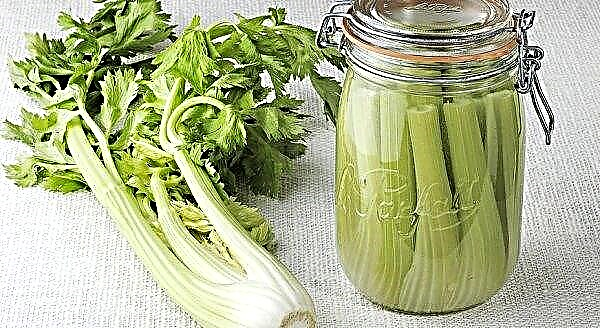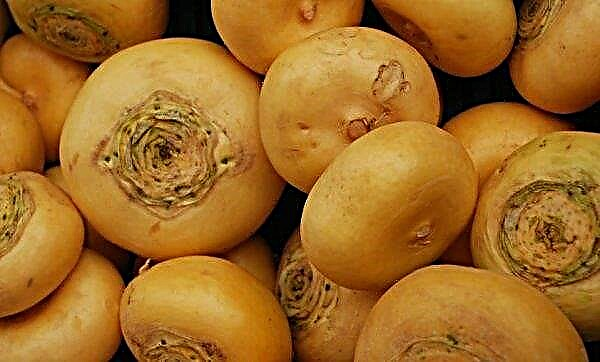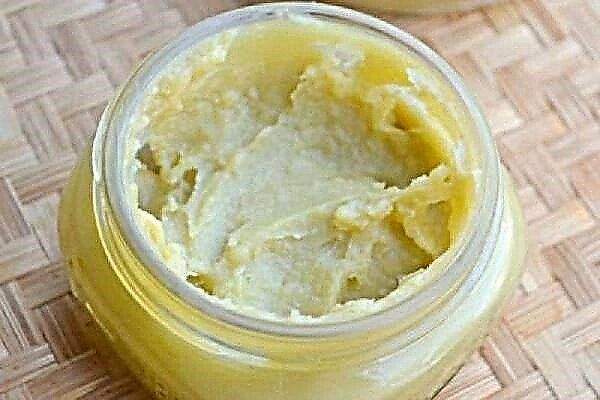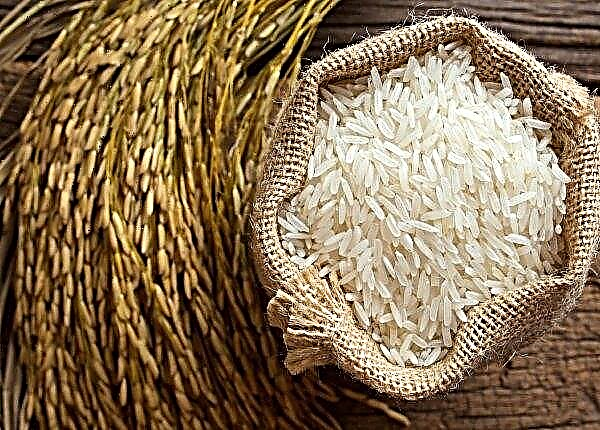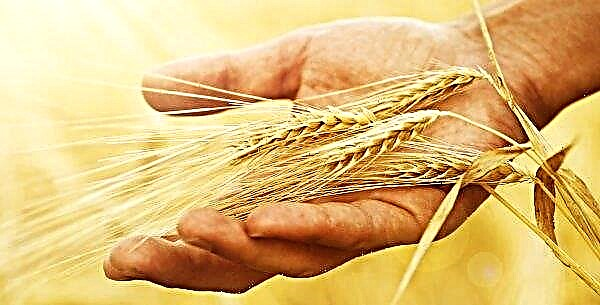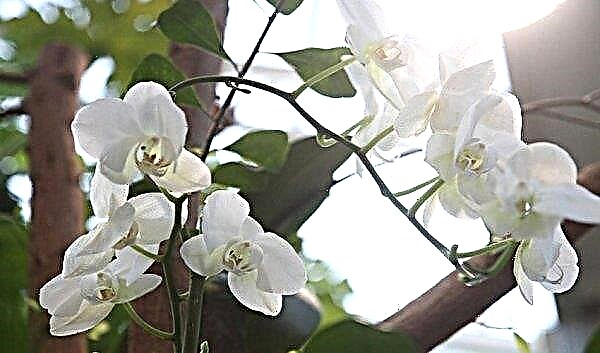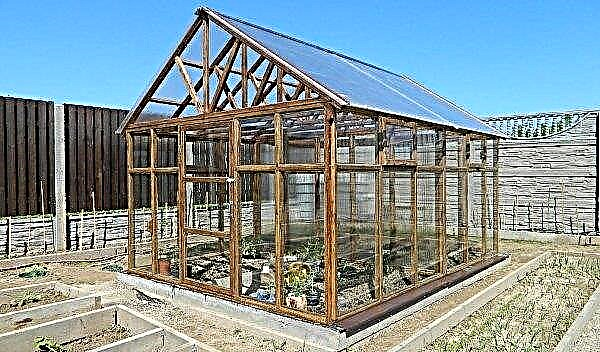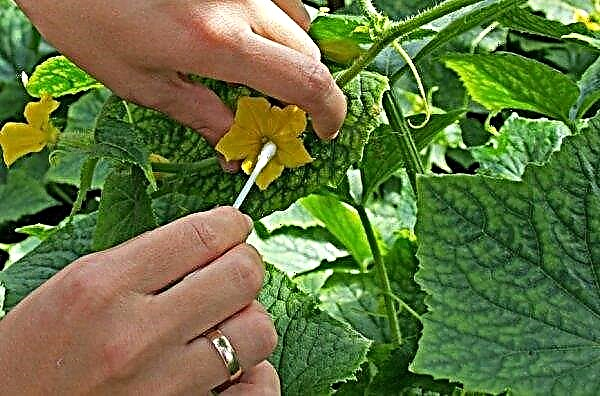Long-awaited grapes - a welcome variety in the gardens of many wine growers. Before planting a bush on the site, you need to thoroughly understand the rules for growing and caring for it.
History of origin of the variety
The variety was bred by amateur breeder V.N. Kraynov in 1996. To obtain the long-awaited grapes, the agronomist crossed varieties Kishmish radiant and Talisman.
Did you know? The ancient Greek physician Hippocrates used grape fruits in medical practice.
Description of grape variety Long-awaited
The average weight of grapes is 800 g. The shape is conical. Berries have a nipple shape, length - 3–3.5 cm. Fruits in a bunch are arranged with medium density. Color varies from light green during fruit formation to yellow-green at the end of fruiting. The weight of one berry is 7–12 g. The skin is not thick, but strong. The fleshy fleshy flesh has a sweet taste with a slight sourness. In some berries, the presence of seeds is possible.
Variety Characteristics
Gardeners choose Long-awaited grapes for growing because of the following fruiting characteristics and the properties of the vines.
Features of fruiting
The variety belongs to the early. The fruiting period is 105-120 days from the awakening of the eyes. The crop finally ripens in August. 9–11 kg of clusters are removed from the bush. Fruits are distinguished for their keeping quality and withstand transportation almost without loss.
Did you know? Archaeologists have discovered evidence of 8 thousand years old about the use of grapes in culture in Georgia.
Vines properties
Cuttings root quickly and efficiently. Also, the variety perceives stocks and scions. The bush is medium-sized, but there are specimens with a growth force above the average. The vine ripens along its entire length.
Advantages and disadvantages of kishmish Long-awaited
- The advantages of grapes of this variety include:
- profuse bearing;
- strong growth;
- early harvest;
- large cluster size;
- sweet and sour taste;
- keeping quality;
- transportation tolerance;
- unpretentiousness in leaving;
- frost resistance up to –23 ° С;
- resistance to mildew, grape tick.
- There are several shortcomings of the Long-awaited kishmish, among them:
- frequent presence of seeds and rudimentary seeds in fruits;
- the need for shelter before frost;
- dependence of crop quality on weather;
- lack of resistance to most fungal infections.
Features of growing and caring for quiche
Long-awaited kishmish is planted and grown, adhering to the peculiarities of caring for the plant. Only when agricultural standards are fulfilled, the bush will bear fruit in the expected amount.
Site preparation
In the middle lane, agronomists recommend planting this variety of sultana in April. Gardeners in the warm southern climate plant bushes in October. A pit is prepared 2-3 months before planting.
Step-by-step instructions for preparing a seat:
- Loosen the soil.
- Dig a hole 0.8 × 0.8 × 0.8 m.
- Place drainage mixture at the bottom. For these purposes, broken brick and sand are suitable.
- Pour the second layer with a mixture of 1 soil shovel, 5-10 kg of organic matter and 300-900 g of superphosphate. Other fertilizers are used depending on the type of soil.
Important! The treatments are carried out according to the instructions using gloves to protect the skin.
Landing
At the bottom of the hole, a hill 10–20 cm high is made in the center. A stalk is placed on it and the processes of the rhizome are spread. The pit is filled with soil, compacted and watered with 20-30 liters of water.
Proper grape care
Active watering is needed in the first year after planting the cuttings. The bush is moistened 2 times a week. Per 1 bush should account for 10 liters of water. The long-awaited - drought tolerant variety. Abundant moisture damages the bushes, so they are further reduced.
Plant soil is irrigated in 3 cases:
- during the formation of fruits;
- before shelter for the winter;
- in conditions of abnormal summer heat.
Important! Reducing the dose of fertilizing is fraught with a small amount of yield.
The soil near the trunk is mulched by 7–10 cm. Organics — straw, hay, grass — are used as mulch. So that the crust does not form on the ground, it is necessary to regularly loosen it as necessary. Together with loosening, weeding is carried out. After removing the shelter, a mixture of 10 l of compost and 1 l of crushed charcoal should be introduced into the soil. The large weight of the clusters, which in some cases reaches 1.5 kg, involves tying up the shoots on the trellis.
Long-awaited - a variety with frost resistance up to –23 ° С.
When the leaves completely fall, the vines are covered as follows:
- The trunk spud.
- On the ground lay the flooring.
- Vines are placed on the floor.
- Heat the shoots with straw, hay or leaves.
- Close on top with agrofibre.
 Shelter should be removed after the last spring frost. For the long-awaited raisin, autumn pruning is optimal. Vines shorten up to 7-10 eyes. In the spring, after removing the shelter, frozen stems should be removed. During the growing season, stepsons and excess foliage are removed, which prevents the ventilation of the green part of the bush.
Shelter should be removed after the last spring frost. For the long-awaited raisin, autumn pruning is optimal. Vines shorten up to 7-10 eyes. In the spring, after removing the shelter, frozen stems should be removed. During the growing season, stepsons and excess foliage are removed, which prevents the ventilation of the green part of the bush.Diseases and Pests
According to the breeder, the variety has a mildew resistance of 3.5–4 points on a standard 5-point scale. Of the pests, the vine is not dangerous to the plant. To avoid oidium, pinch off excess leaves. The procedure helps to air the green part, which protects the bush from this disease. To prevent other diseases and pests, the winegrower should take care of the bush - to water, fertilize, mulch, and loosen the soil. In March, the vine is sprayed with Bordeaux liquid or iron sulphate to protect against fungal infections.
The long-awaited kishmish is an unpretentious productive variety with advantages and disadvantages. With proper cultivation, a harvest from a grape bush will delight you with the quantity and pleasant sweet and sour taste.

